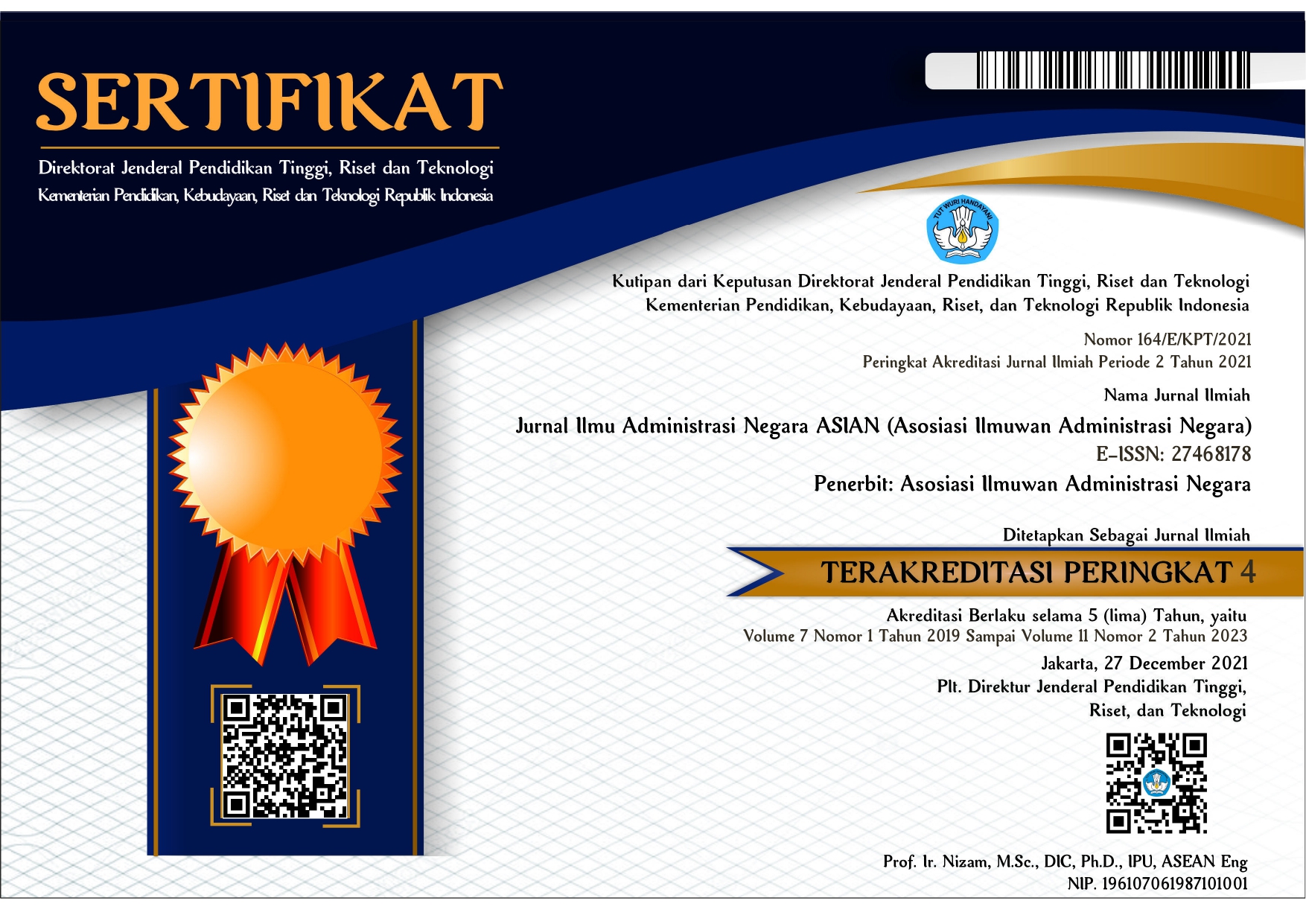Mendesain Ulang Organisasi Pelayanan Publik Melalui Digitalisasi Proses Bisnis
 Abstract views: 1024
,
Abstract views: 1024
,
 PDF downloads: 828
PDF downloads: 828
Abstract
This study aims to analyze the design changes of public service organizations by taking cases on licensing service organizations in Banyumas Regency. The results show that merging and pruning organizational structure becomes the only way in organizational design changes. This has led to public service organizations stuck on simplifying organizational structures and neglecting business processes. Therefore, through this research obtained an explanation of the importance of redesigning public service organizations by prioritizing the simplification of key business processes within the organization. The integrated organizational design becomes the best choice to realize more responsive and accountable public services. To integrate the process of integration between units within the organization, technology plays a very important role. Any organization that wants to go forward needs to develop a digital-based organization design rather than using a hierarchical mechanism for control and coordination. Such designs require strategic alignment and the culture of digital technology within the organization. The "actors-oriented" principle is central to the design of a digital-based integrated organization. If this is implemented correctly, then the workplace where the members of the organization are located can become more productive
Downloads
Authors who publish with this journal agree to the following terms:
1. Copyright on any article is retained by the author(s).
2. The author grants the journal, right of first publication with the work simultaneously licensed under a Creative Commons Attribution License that allows others to share the work with an acknowledgment of the work’s authorship and initial publication in this journal.
3. Authors are able to enter into separate, additional contractual arrangements for the non-exclusive distribution of the journal’s published version of the work (e.g., post it to an institutional repository or publish it in a book), with an acknowledgment of its initial publication in this journal.
4. Authors are permitted and encouraged to post their work online (e.g., in institutional repositories or on their website) prior to and during the submission process, as it can lead to productive exchanges, as well as earlier and greater citation of published work.
5. The article and any associated published material is distributed under the Creative Commons Attribution-ShareAlike 4.0 International License









